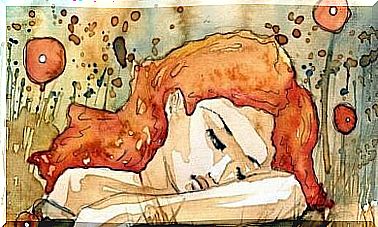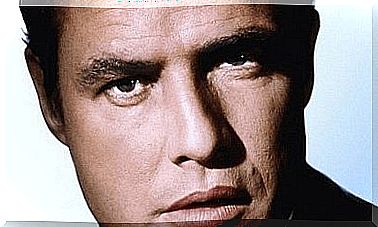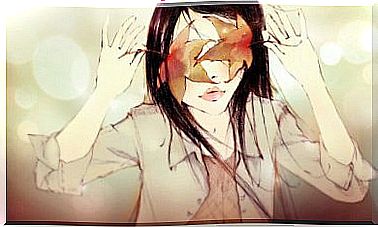Movement Disorder Dyskinesia: Why Does It Occur?
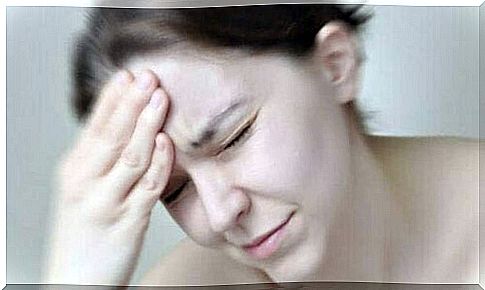
The movement disorder dyskinesia is a disorder that causes the sufferer to experience abnormal, uncontrollable and involuntary movements. It usually begins with small “tics” on the face, mouth, tongue and cheek, or in the hands. As time goes on, these hyperkinetic changes can spread to the rest of the body. There are several causes for this condition, but it often occurs as a side effect of medication.
It is easy to confuse this clinical situation with akathisia. The latter, however, is more related to anxiety and an inability to sit still. As a result, those who suffer from akathisia often have to go for walks to move their legs. Dyskinesia is more problematic because people can not control or do anything about it. The condition often accompanies psychiatric disorders or neurological diseases.
In addition, between one and five percent of cases are age-related and some older people suffer from this type of hyperkinetic disorder without previous experience.
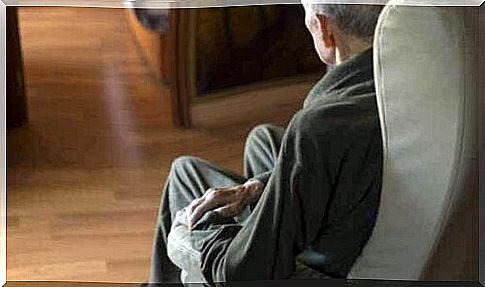
Definition and symptoms of movement disorder dyskinesia
The condition consists of a movement disorder similar to that which occurs with ataxia (loss of muscle coordination) and dystonia (involuntary muscle contractions which are usually very painful). Normally, patients with dyskinesia exhibit involuntary movements similar to tics. In addition, these are quite often relatively conspicuous manifestations.
As we mentioned above, these involuntary movements usually start in the face. Later, they manifest in the hands and feet and gradually impede normal body movements. The most complex part of this situation is that it continuously worsens once it has emerged. It is important to know what causes it and seek the most appropriate treatment based on that knowledge.
Continue reading to find out what the most common types of dyskinesia are.
Drug-induced dyskinesia during Parkinson’s disease
The movement disorder dyskinesia often develops in patients with Parkinson’s disease. However, it is not the neurodegenerative disease itself that causes tics and movement disorders. These are in fact caused by the drugs used during treatment.
Parkinson’s develops from a change in the nerve cells that normally produce dopamine; these then die slowly. The cells that control our movements cannot send messages to the muscles without this neurotransmitter. Those affected usually take Levodopa during the course of the disease and this increases the production of dopamine.
Studies, including one conducted at the University of San Francisco, suggest that dopamine replacement therapy with Levodopa relieves Parkinson’s motor symptoms. But it does so at the cost of side effects that affect almost half of the patients. This is because it promotes the development of involuntary movements and defines a condition called Levodopa-induced dyskinesia.
The symptoms are:
- tics
- swaying
- routes
- involuntary arm and foot movements
- restlessness in the extremities.
The effect of neuroleptic
Another cause of dyskinesia is also due to the use of other drugs, such as neuroleptics. These drugs act as antipsychotics and powerful sedatives. Tardive dyskinesia can sometimes occur when a patient has been following these treatments for a long time.
Some of the drugs from which this movement disorder can arise are
- first-generation antipsychotics, such as haloperidol, zuclopenthixol, perfenazine, etc.
- second-generation antipsychotics, such as risperidone, paliperidone, quetiapine, aripiprazole and more.
- antidepressant drugs, such as amitriptyline, fluoxetine, phenelzine, etc.
- anticonvulsant drugs, such as phenytoin and phenobarbital.
Neurological and autoimmune conditions
Some people with autism spectrum disorder may exhibit dyskinetic movements, such as swaying of the upper body. However, this is not the only neurological condition that creates this manifestation:
- It also affects cerebellar degeneration conditions.
- It can occur in neurovascular diseases and in patients who suffer from stroke.
- Wilson’s disease is a rare inherited disease in which the body cannot get rid of excess copper. In that case, it can also be experienced as a symptom of dyskinesia.
- Finally, in the case of autoimmune diseases, it is common for people with multiple sclerosis to develop dyskinesia.
Myoclonic dyskinesia
This is a variation within this type of disorder that manifests itself with involuntary and short movements resulting from a sudden muscle contraction. These movements are sometimes painful.
The causes of this phenomenon are:
- progressive myoclonic encephalopathy.
- encephalopathy caused by a lack of oxygen in the brain.
- Myoclonic epilepsy affects women to a greater extent than men and is limited to various facial twitches and tics.
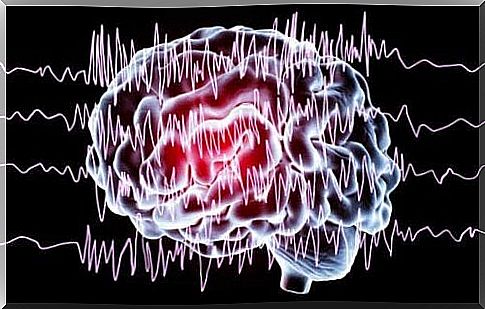
Stereotype and tics
There is a type of dyskinesia where the sufferer can achieve a certain level of control over these symptoms if they learn strategies to reduce them. This phenomenon often occurs in people with an autism spectrum disorder.
Depending on the severity of the condition, either more or less incapacity for work occurs in dyskinetic tics. Among those that can occur are:
- Simple tics.
- Common motor stereotypes, such as repetitive and ritualized movements.
- Several and complex tics that resemble severe spasms where the person may experience the need to express inappropriate words and even insults. Tourette’s syndrome, for example.
Treatments for Movement Disorder Dyskinesia
How treatment is done depends on what triggers the problem. It is not the same for Parkinson’s as for someone with an externally caused brain injury. The important thing in all cases is to make a diagnosis and understand the severity of the symptoms.
In general, patients follow some of these guidelines:
- Discontinue use of drugs that cause dyskinesia and try alternative medications. This seems simple in principle, but it is actually very problematic. This is because it prevents you from effectively treating the primary disease.
- Injections of botulinum toxin often work in situations where dyskinesia affects the face.
- Brainwave stimulation is another treatment with a relatively good degree of success under these conditions.
Finally, the treatment of these conditions is always complex and depends on interdisciplinary methods to be able to lead the patient to make some progress. But it is nevertheless possible in many cases to reduce the effects of dyskinesia and create a better quality of life for the affected person.
